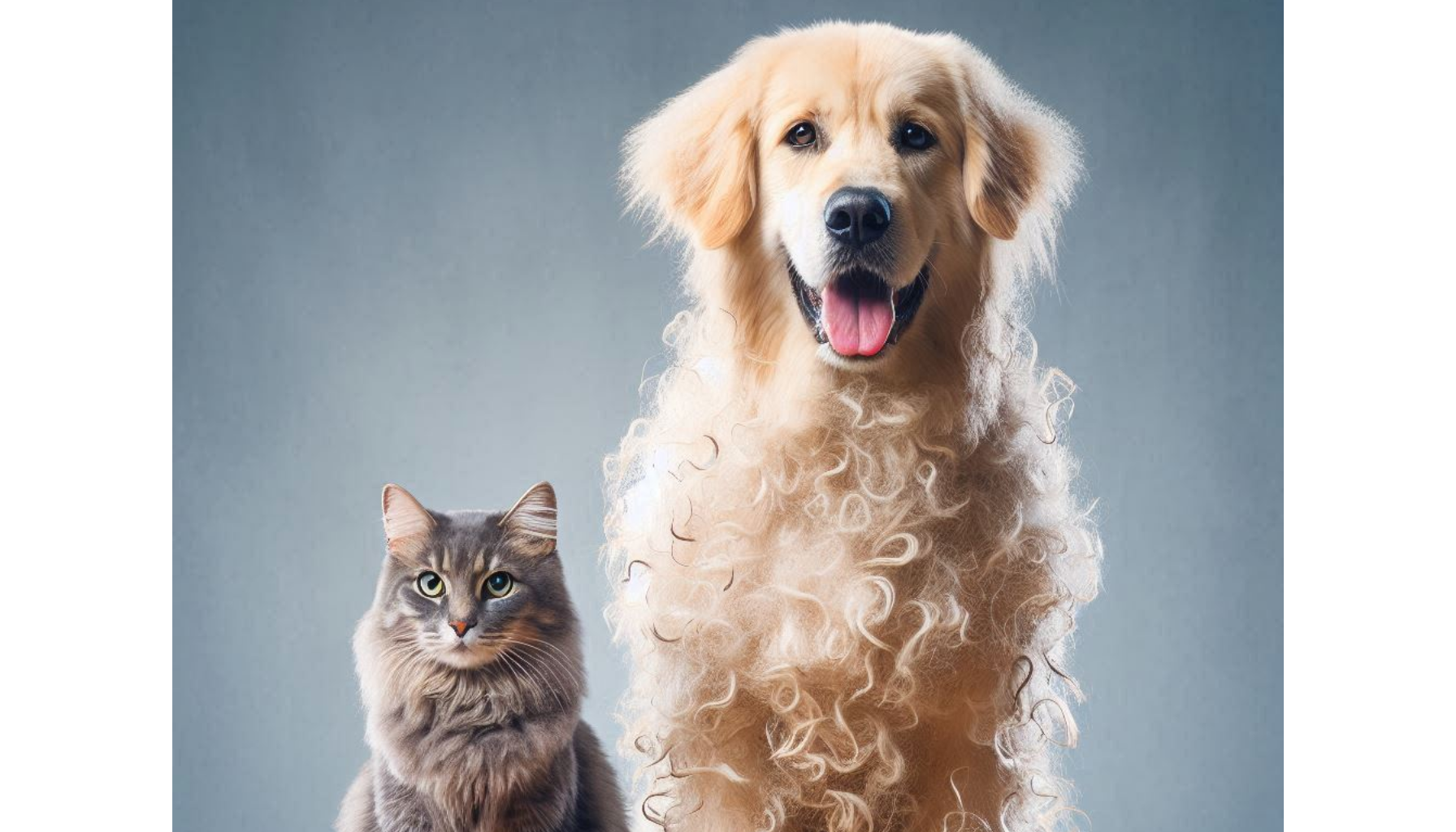Shedding is a natural process for dogs and cats, but excessive fur around your home can be frustrating. While you can’t stop shedding completely, there are many ways to reduce it and keep your home clean.
In this guide, you’ll learn why pets shed, how to control it, and the best grooming techniques to minimize loose fur.
1. Why Do Pets Shed? 🤔🐾
Shedding is the natural way pets get rid of old or damaged fur. Some breeds shed more than others, and seasonal changes can also affect shedding.
✅ Common Causes of Shedding:
✔ Seasonal shedding (spring and fall = heavy shedding).
✔ Breed type (Labradors, Huskies, and Persian cats shed a lot).
✔ Poor diet (lack of nutrients can cause excessive shedding).
✔ Stress or anxiety (can trigger extra fur loss).
✔ Health issues (allergies, infections, or hormonal imbalances).
🚨 Warning: If your pet has bald spots, excessive itching, or irritated skin, see a vet—it could be a medical issue.
📌 Tip: Regular brushing reduces loose fur before it spreads all over your home!
2. How to Reduce Shedding with Proper Grooming 🛁🐶🐱
Regular grooming is the #1 way to control shedding and keep your pet’s coat healthy.
✅ Best Grooming Practices for Dogs & Cats:
✔ Brush your pet daily to remove loose fur.
✔ Use a deshedding tool (like the Furminator) for heavy shedders.
✔ Bathe your pet monthly with a gentle, moisturizing shampoo.
✔ Trim fur around high-shed areas (like belly and legs).
📌 Tip: Short-haired pets need brushing too—even if their fur is fine!
3. Choosing the Right Brush for Your Pet 🖌️🐕🐈
Different fur types need different brushing tools for the best results.
✅ Best Brushes for Each Coat Type:
🐕 Dogs:
✔ Short-haired dogs (Beagles, Boxers): Soft bristle brush or rubber curry brush.
✔ Medium-haired dogs (Corgis, Golden Retrievers): Slicker brush or undercoat rake.
✔ Long-haired dogs (Huskies, Collies): Deshedding brush & metal comb.
🐱 Cats:
✔ Short-haired cats (Siamese, British Shorthair): Rubber brush or fine-tooth comb.
✔ Long-haired cats (Maine Coon, Persian): Slicker brush & wide-tooth comb.
🚨 Warning: Never use human hairbrushes on pets—they don’t remove loose fur effectively.
📌 Tip: Brush outside or over a towel to avoid spreading fur inside the house!
4. The Importance of a Healthy Diet for Shedding Control 🥩🥦
A nutrient-rich diet keeps your pet’s skin and coat healthy, reducing excessive shedding.
✅ Best Foods & Supplements for Coat Health:
✔ High-quality protein (chicken, fish, beef).
✔ Omega-3 & Omega-6 fatty acids (salmon oil, flaxseed).
✔ Biotin & Vitamin E (supports healthy skin and hair).
✔ Plenty of fresh water (hydration prevents dry skin).
🚨 Warning: Low-quality pet food with fillers (corn, wheat, soy) can cause skin irritation and more shedding.
📌 Tip: If your pet sheds a lot, try a fish oil supplement for a shinier, healthier coat.
5. Reduce Shedding with Regular Bathing 🛁🐾
Bathing removes loose fur, dirt, and dander, helping control shedding.
✅ How Often Should You Bathe Your Pet?
🐶 Dogs: Every 3-6 weeks (depends on breed & coat type).
🐱 Cats: Only if necessary (most cats groom themselves).
🚨 Warning: Overbathing can dry out the skin and cause more shedding—always use moisturizing pet shampoo.
📌 Tip: Use a deshedding shampoo & conditioner for extra fur control.
6. Keep Your Home Clean from Pet Fur 🏡✨
Even with grooming, some fur will still end up in your home.
✅ Best Ways to Keep Your Home Fur-Free:
✔ Use a robot vacuum or pet hair vacuum daily.
✔ Place washable covers on furniture & beds.
✔ Use a lint roller or pet hair remover on clothes.
✔ Wash pet beds & blankets weekly.
📌 Tip: Dryer sheets help remove fur from laundry before washing!
7. Prevent Shedding with Stress Reduction 😌🐾
Stress can increase shedding, so creating a calm environment is important.
✅ Ways to Keep Your Pet Stress-Free:
✔ Stick to a consistent routine.
✔ Provide enrichment & playtime.
✔ Use calming pheromone diffusers (Adaptil for dogs, Feliway for cats).
✔ Avoid sudden loud noises or major changes.
🚨 Warning: If your pet suddenly sheds a lot more than usual, check for stress triggers like new pets, new home, or loud noises.
📌 Tip: A calm pet = less stress-related shedding!
8. Seasonal Shedding: What to Expect 🍂🐶🐱
Many pets shed more in spring & fall as they adjust their coat for the weather.
✅ Spring Shedding: Pets lose their thick winter coat → more brushing needed.
✅ Fall Shedding: Pets grow a thicker coat for winter → mild shedding occurs.
📌 Tip: Increase brushing during these seasons to prevent fur buildup!
9. When to See a Vet About Excessive Shedding 🏥🐕🐈
Some shedding is normal, but sudden or extreme fur loss may signal a health issue.
🚨 Signs of Abnormal Shedding:
🔴 Bald patches or uneven hair loss.
🔴 Excessive itching, redness, or flaky skin.
🔴 Dull, brittle fur.
🔴 Licking or biting fur excessively.
Possible causes include:
🚨 Allergies (food or environmental).
🚨 Skin infections or parasites (fleas, mites).
🚨 Hormonal imbalances (thyroid, Cushing’s disease).
📌 Tip: If shedding suddenly increases, consult a veterinarian for a check-up!
10. Be Patient & Stay Consistent! ⏳🐾
Shedding can’t be stopped completely, but with regular grooming, a healthy diet, and proper care, you can significantly reduce it!
✅ Shedding Control Checklist:
✔ Daily brushing removes loose fur.
✔ High-protein diet keeps coats healthy.
✔ Regular baths with deshedding shampoo.
✔ Vacuum and clean pet areas frequently.
✔ Check for stress or health issues if shedding increases.
🐾 A little effort goes a long way—soon, you’ll notice less fur and a healthier, happier pet!
